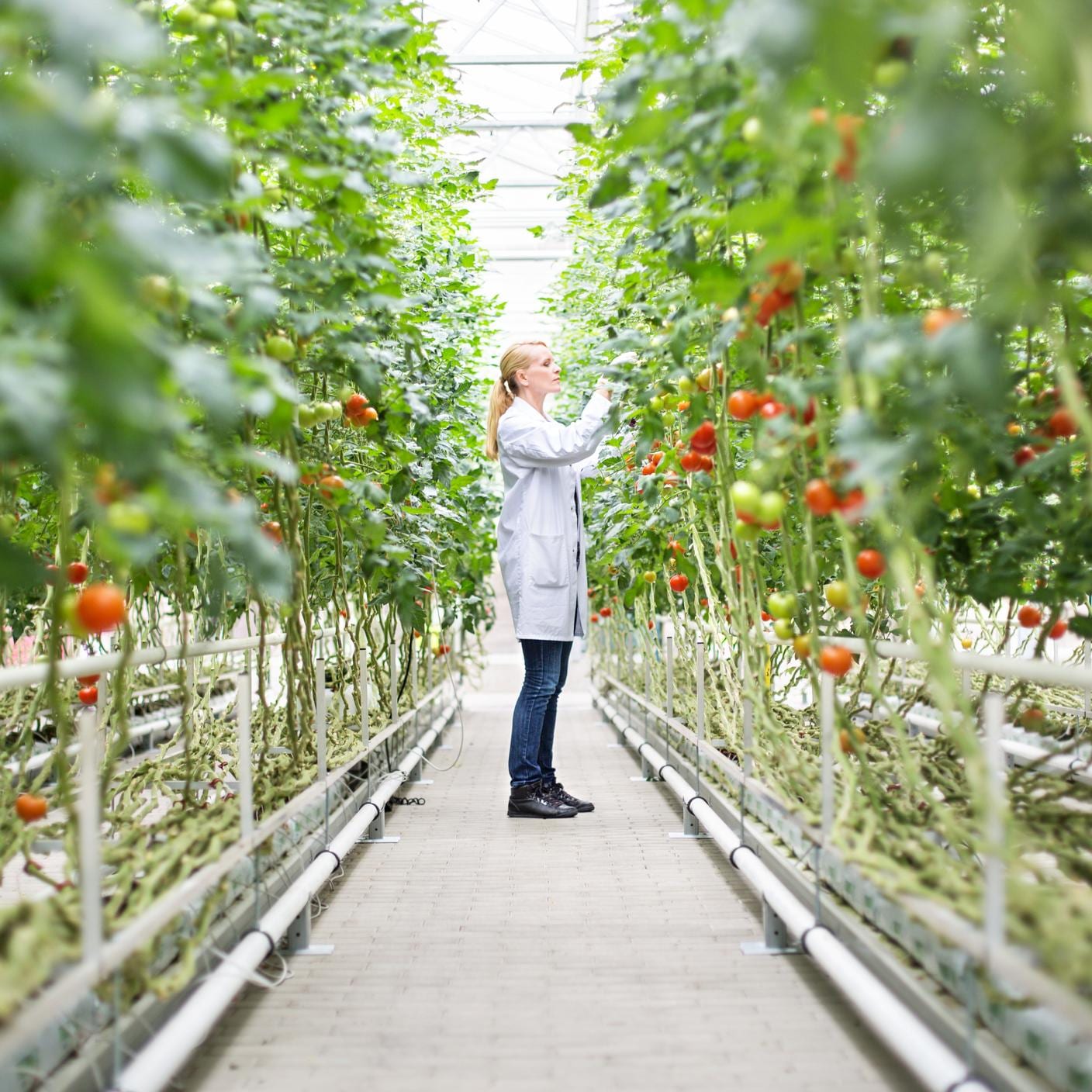Circularity and Standards: Practical Pathways for Business Transformation
The transition to sustainability and net zero is accelerating and circular practices are becoming essential to improving resource efficiency, driving innovation and cutting emissions.
As regulation and stakeholder expectations rise, businesses must move beyond linear ‘take-make-waste’ models toward regenerative systems that retain value and reduce environmental impact. Achieving this requires more than ambition, it calls for practical tools, shared definitions and measurable outcomes.
Standards provide this foundation. They embed circularity into strategy and operations, align value-chain partners and turn high-level goals into actionable, credible pathways.
This blog explores how standards, from eco-design and remanufacturing to agri-food and digital systems, are helping organizations move from commitment to implementation.
Why circularity matters for business
Circularity is about maximizing the value of products, materials and resources by keeping them in use for as long as possible. For businesses, this translates into:
- Cost savings through resource efficiency.
- New revenue streams from reuse, remanufacturing and service models.
- Regulatory compliance with emerging sustainability legislation.
- Enhanced brand value and stakeholder trust.
- Resilience against supply chain disruptions and resource scarcity.
Professor Martin Charter, Director of The Centre for Sustainable Design at UCA, Chair of the BSI (UK) Circular Economy Committee (CED/1) and author of Designing for the Circular Economy says:
“Implementing circularity across diverse sectors, from manufacturing to fashion, requires more than good intentions. Alongside principles-based frameworks and laying out consistent characteristics, what’s needed in an enterprise’s toolkit are sector-specific standards that guide action and enable accountability”
The role of standards in circular business models
Standards are essential for:
- Defining circularity in measurable terms.
- Aligning supply chain partners around common practices.
- Ensuring quality and safety in reused or remanufactured products.
- Demonstrating compliance with regulations and ESG frameworks.
- Facilitating innovation through shared methodologies.
The UK’s BS 8001, the first national standard for implementing circularity in organizations and the international ISO 59000 series are foundational tools. Combined with sector-specific standards from BSI, ISO, IEC and CEN/CENELEC, they equip organizations with practical pathways to act.
Sectors and topics
1. Eco-design and the circularity of products and services
Design plays a pivotal role in enabling circularity. A range of standards guides businesses in embedding circular thinking from the earliest stages of product development.
Foundational frameworks such as BS 8001 (circular economy principles for organizations), BS ISO 59004 (vocabulary and principles), BS ISO 59020 (measuring circularity performance), BS ISO 59010 (business model transition), BS ISO 59014 (traceability of secondary materials) and BS EN 45560 (product circularity data sheet) guide organizations define, measure and transition toward circular business models.
Additional eco-design standards, including BS EN 45560 (methods for circular product design), BS EN IEC 62430 (environmentally conscious design for electrotechnical products) and BS EN ISO 14006 (eco-design integration within environmental management systems), support environmentally conscious product development and help integrate sustainability considerations into design and engineering processes.
Committees: CED/1 Circular economy, SDS/2 - Smart and sustainable cities and communities
2. Net Zero and carbon reporting
Circularity and net zero are deeply interconnected and several standards help organizations ensure their circular strategies align with climate goals.
Guidance such as NZ Flex 3030 (net zero transition planning for SMEs), ISO 14060 (framework for net-zero-aligned organizations), ISO 14064-1 (Greenhouse gas quantification and reporting) and ISO 14068-1 (climate change management and carbon neutrality) provide essential tools for credible emissions management.
Also, to support integration with wider sustainability frameworks, IWA 48 offers practical principles for ESG implementation.
For further guidance on applying Flex 3030, explore our net zero transition planning resources, including the Step-by-Step Guide, a practical webinar and SME case studies showcasing how the standard is helping organizations build confidence and capability.
Committees: SES/1/7 - Greenhouse gas management and related activities
3. Waste materials and recycling
Effective circular systems rely on robust waste management and material recovery. Several standards provide tools for greater consistency and quality along waste value chains.
These include BS EN ISO 24161:2024 (waste collection and transport vocabulary), PAS 402:2025 (waste resource management performance reporting) and BS ISO 20001 (food loss and waste management system, under development). Standards such as PAS 100:2018, which specifies requirements for composted materials, further strengthen circular material flows.
Committees: B/183 Waste containers and associated lifting devices on refuse collection vehicles, AW/34/20 Food loss and waste
4. Remanufacturing and reconditioning – General and electrical
Traditional, linear manufacturing is resource-intensive and waste-generating.
According to TechUK, e-waste is the fastest-growing waste stream in the world, underscoring the urgency for more circular approaches.
Remanufacturing extends product life and reduces raw material use, but depends on rigorous, trusted quality processes. Research from BSI and the Cambridge Institute for Sustainability Leadership, highlighted in The Tipping Point report, shows that consumer and market confidence hinges on consistent, credible standards.
The BS 8887 series provide this framework, covering design for manufacture, assembly, disassembly and end-of-life processing, including BS 8887-220 (the remanufacture process), BS 8887-211 (reworking computing hardware), BS 8887-3 (selecting appropriate end-of-life strategies) and BS 8887-221 (remanufacture of luminaires).
Sarah Kelly, Lead Standards Development Manager for Materials and Manufacturing at BSI notes: “Work to extend remanufacture and reconditioning is expanding across sectors, including automotive. Standardisation is vital to ensure global consistency and interoperability at scale.”
Committees: TPR/1/7 Technical product realisation - BS8887 Design for MADE
5. Construction and Construction Products
The built environment is one of the most resource-intensive sectors, generating almost 40% of global waste (McKinsey & Co). As net-zero and climate-resilience commitments intensify, the construction sector is under growing pressure to cut its environmental footprint and adopt circular practices.
Circular construction requires a system-wide rethink, from planning and procurement to maintenance and end-of-life, prioritising reusable materials, designing for disassembly and embedding lifecycle thinking across assets.
A suite of standards supports this transition. Key tools include PAS 2080 on carbon management in infrastructure, BS 40104:2025 for domestic retrofit assessment, BS 8895 series on material-efficient design, Flex 350 for low-carbon concrete, PAS 14191:2020 on construction data dictionaries, BS EN 18177 for circular construction, BS 8001 on circular economy, BS ISO 20887 for design for disassembly and adaptability.
Anthony Burd, Director of Built Environment at BSI Knowledge, notes that PAS 2080 provides a framework for understanding whole-life carbon impacts and the interdependencies across the value chain, encouraging early collaboration. The standard also supports verification, from carbon measurement and supply-chain management to clarifying organisational responsibilities throughout project delivery.
Committees: B/558 Sustainability of construction works, BS/558/1 Circular economy in the construction sector, WEE/43 Welding of steel for concrete reinforcement; CB/401 Retrofitting energy efficiency measures.
6. Textiles, clothing and apparel
The fashion and textiles industry is at a critical juncture in the global transition to sustainability and net zero. As a major source of greenhouse gas emissions and textile waste (UNFCC and WRAP), the sector faces growing pressure from regulators, investors and consumers to transform its practices.
Circularity offers a pathway forward, shifting the industry away from fast fashion and linear production toward models that prioritise durability, reuse and responsible consumption. Policy drivers, including extended producer responsibility (EPR), eco-design rules and global climate targets, are increasingly reinforcing this shift.
Standards provide the consistency, transparency and quality needed across complex textile supply chains.
Key tools include BS EN ISO 14021 (environmental labels), BS EN 17861:2023 (circular economy terms for textiles)and vocabulary guidance such as BS EN ISO 5157: 2023. New work programmes across CEN and iso, including the developing prCEN/TS18271 series on circular textiles and the ISO/AWI 25957 series on environmentally conscious fibres, will further strengthen the global framework. Together, these initiatives support more responsible production, material innovation and scalable circular business
Ongoing work withing CEN/CLC/TC 248/WG 39 Circular Economy for Textile Products and the Textile Chain and ISO/TC 38 Textiles, continues to shape this landscape, with UK experts contributing through BSI’s TCI/100/3 committee.
Committees: TCI/100 Coordination of activities in textiles and clothing; TCI/100/3 Circular economy for textile products and the textile chain
7. Healthcare and Medical Devices
Circularity in healthcare is becoming a priority, particularly concerning product lifecycles and waste in clinical settings (World Health Organization). The forthcoming PAS 2090, will provide guidance on pharmaceutical lifecycle assessments to support more sustainable practices.
In MedTech, the University of Exeter’s MedTech Spotlight Report, outlines a roadmap for accelerating circularity across a sector that spans more than 500,000 medical products, from walking aids to imaging equipment, illustrating the scale of the challenge and the potential for impact.
Rob Turpin, Director of Healthcare at BSI Knowledge, notes that initiatives such as the Department of Health and Social Care’s Design for Life programme reflect this shift: ‘’By moving from avoidable single-use products to circular approaches, including reuse, remanufacture and recycling, the sector can reduce environmental impact and improve resilience. This transition also creates opportunities for UK businesses and delivers better value for patients. Standards will be essential to ensure this happens safely and with confidence’’.
Committees: CH/210/7 Circularity in healthcare, TPR/1/7/5 Reman (medical devices)
8. Transport
Nick Fleming, Director of Transport and Mobility at BSI Knowledge, notes that “Sustainability and circularity are increasingly shaping how the automotive, aerospace and rail sectors design assets and manage supply chains, extending lifetimes, reducing waste and cutting environmental impact. In automotive this shift is driven by regulation, in aerospace and space by the need to recycle and refurbish core components and in rail by embedding circularity across infrastructure. Standards are essential to ensure these practices are safe, consistent and sustainable.”
A range of tools support this transition. BS 10125 supports high-quality vehicle repair, PAS 7060 provides guidance for the safe and circular management of EV batteries and PAS 280 support through-life engineering.
Infrastructure-focused standards such as BS EN IEC 62840-1 for battery swap systems, BS ISO 17748-4 on green ITS services and BSI Flex 2071 v2.0:2025-01 for HGV charging design aim to accelerate the transition to low-carbon transport.
For remanufacturing, BS 8887-220, provides specifications for the design, assembly, disassembly and end-of-life processing of remanufactured parts, increasingly important in the automotive sector.
9. Agri-food: Building circularity into food systems
Committees: AW/34/20 Food loss and waste
According to the UN’s Food and Agriculture Organization (UN FAO) every year, around 14% of food globally is lost post-harvest and in the distribution chain prior to retail. Another 17% of food available to consumers is wasted. Also, food loss and waste account for 8 to 10% of the world’s greenhouse gas emissions.
As one of the largest resource users, agri-food has significant potential to reduce waste and regenerate ecosystems through circular practices. Standards provide the frameworks needed to do this reliably.
Emerging tools include ISO 20001 on food loss and waste reduction, currently in draft, is being developed under the leadership of Dr Liz Goodwin OBE, Senior Fellow for Food Loss and Waste at the World Resources Institute and Chair of the ISO committee. She notes: “This standard embeds food loss and waste reduction into how we manage our food system: a crucial step in transitioning towards more sustainable food systems.”
Additional standards such as BS EN 13432 for compostable packaging and PAS 9017 for assessing the biodegradation of plastics enable manufacturers to demonstrate their commitment to more circular practices. Broader sustainability tools, including BS ISO 20400 on sustainable procurement, BS EN ISO 14040/44 on life cycle assessment, ISO 15270 on plastics recycling, PD CEN/TR 17341:2019 on bio-based reporting and BS EN ISO 22000 on food safety, further support the transition to more circular agri-food systems.
Committees: SVS/20 Automotive services, AUE/0/-/1 Automotive plastics recycling; PEL/69 Electric vehicles (international work on road vehicles); EPL/278 Intelligent transport systems.
10. Energy and Batteries
Battery technologies are central to the circular and net zero transition, yet the sector still faces significant gaps in guidance around recyclability, second-life applications and material recovery. A lack of clear standards, particularly for second-life battery use and the definition and treatment of black mass, continues to slow the adoption of circular practices.
Abbey Dorian, Sector Lead for Energy at BSI Knowledge says “Through the Faraday Battery Challenge Reboot, BSI worked with industry, academia and regulators to identify needs, highlighting the importance of clearer frameworks for circularity, recyclability and safe reuse. While this work has not yet progressed into formal standards, it has shaped future priorities.
Alongside this, existing standards provide an initial foundation, including PAS 7060 on circular EV battery design and use, PAS 7061 for propulsion batteries and PAS 7062 for EV battery cells. The UK’s Battery Innovation Programme continues to build roadmaps and research that will guide the next wave of standards across energy storage and electric mobility. Further standardisation will be crucial to unlock genuinely circular battery systems at scale.
Committees: PEL/21 Secondary cells and batteries, PEL/69 Electric vehicles, ESL/120 Electrical energy storage, IST/47/-/3 E-business (digital product passports), SGG/0 Energy Storage, Health and Safety Governance Group.
11. Digital and data systems
Joy Tan, Senior Standards Manager, Digital Sector, BSI Knowledge, notes “Digital infrastructure underpins circularity, enabling traceability and better resource management. Standards help ensure these systems are efficient and sustainable. ISO IEC 30134 provides KPIs for data centres, while ISO/IEC TR 20226 and CEN CLC TR 18145 offer guidance on the environmental aspects of AI while supporting responsible, lower-impact digital systems that enable circular flows.
“Work is also underway to develop a framework and system for digital product passports that are interoperable across systems and sectors. DPPs will help to build greater transparency and traceability across product lifecycles. Some sectors will need to produce DPPs to sell their goods into Europe, including but not limited to textiles, batteries and construction sectors. If you’d like to contribute to this work, please get in touch with the UK BSI committee team for IST/47/-/3 (E-business).”
Committees: IST/47/-/3 E-business, TCT/7/3 (Telecoms, installation, facilities, infrastructures, ART/1 Artificial intelligence
12. Critical minerals
Critical minerals are essential to low-carbon technologies and circularity in this area depends on transparency, responsible sourcing and material stewardship. The BSI Critical Materials Standards Hub offers evolving guidance, including BS EN 45558, which provides a method for declaring the use of critical raw materials in products, an important step toward improving recovery and reducing supply chain risks.
Committees: Various (see Critical Minerals Standards Hub)
13. Plastics, packaging and bio-based materials
Advancing circularity in plastics and packaging requires coordinated action across design, material selection and recovery infrastructure.
The BS EN 18120 series is due to be published in early 2026 and will support the design for recycling of plastic packaging, while work is also underway on the ISO 15270 series of standards, which will offer principles for the recovery and recycling of plastic waste. PAS 9017 specifies requirements for assessing the biodegradation of plastics, guidance such as the BS ISO 16620 series helps organizations assess and verify biobased content in plastics and the BS EN ISO 22526 series provides methods for evaluating the carbon footprint of bio-based plastics.
Anna Fricker, Senior Standards Manager for this area, notes “Complementing all of this work, BS EN 16751 gives horizontal sustainability criteria for bio-based products and PD CEN/TR 17341:2019 provides practical examples of reporting on these criteria, helping organizations strengthen transparency and accountability across value chains’’.
Committees: PRI/89 Plastics - environmental aspects, PKW/0 Packaging, MI/2 Biobased products
Circularity is no longer a future ambition, but a practical path business can take today. By drawing on recognized standards, organizations can turn sustainability commitments into credible action, reduce risk and unlock new opportunities for value creation. As the circular economy continues to expand, standards offer a reliable foundation to move forward with clarity, consistency and confidence.







